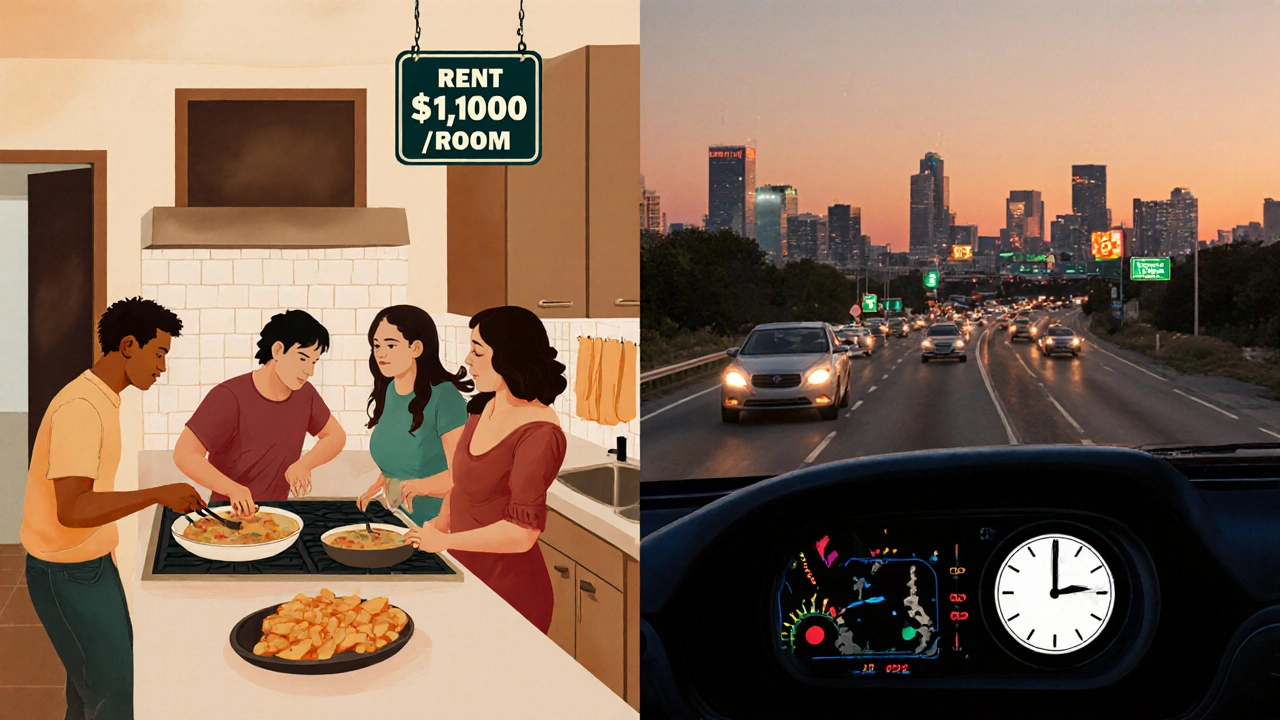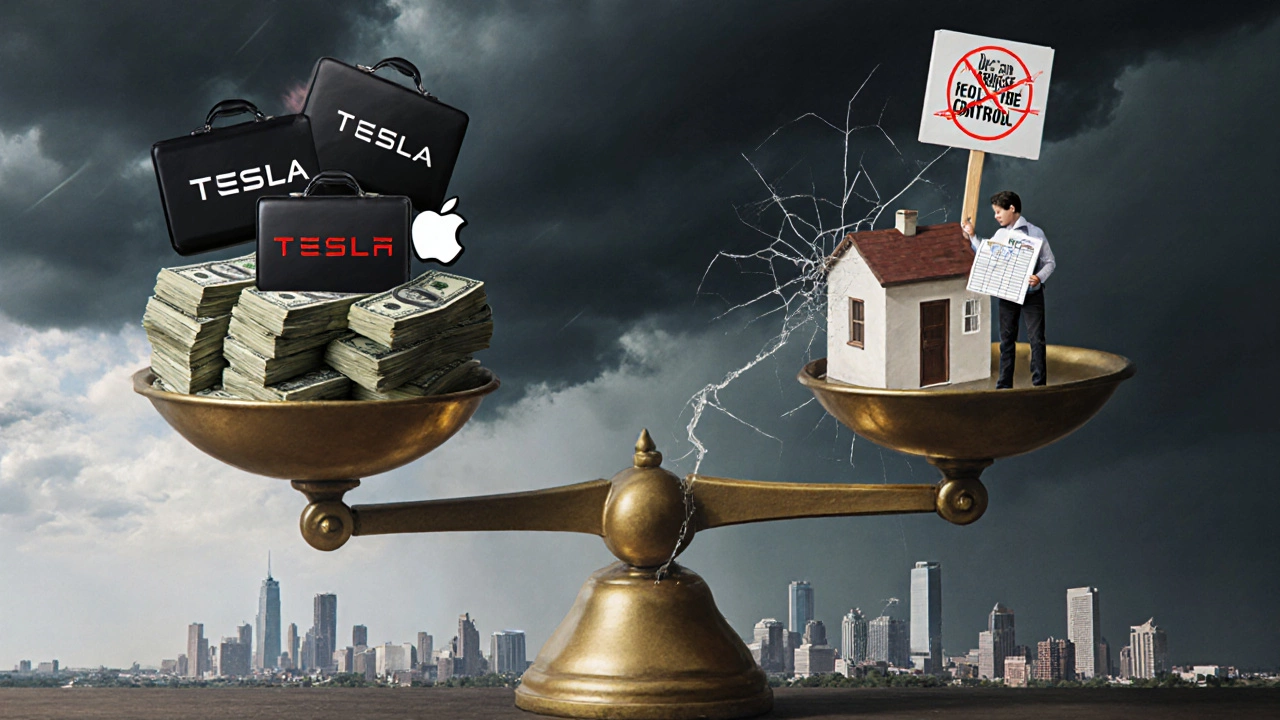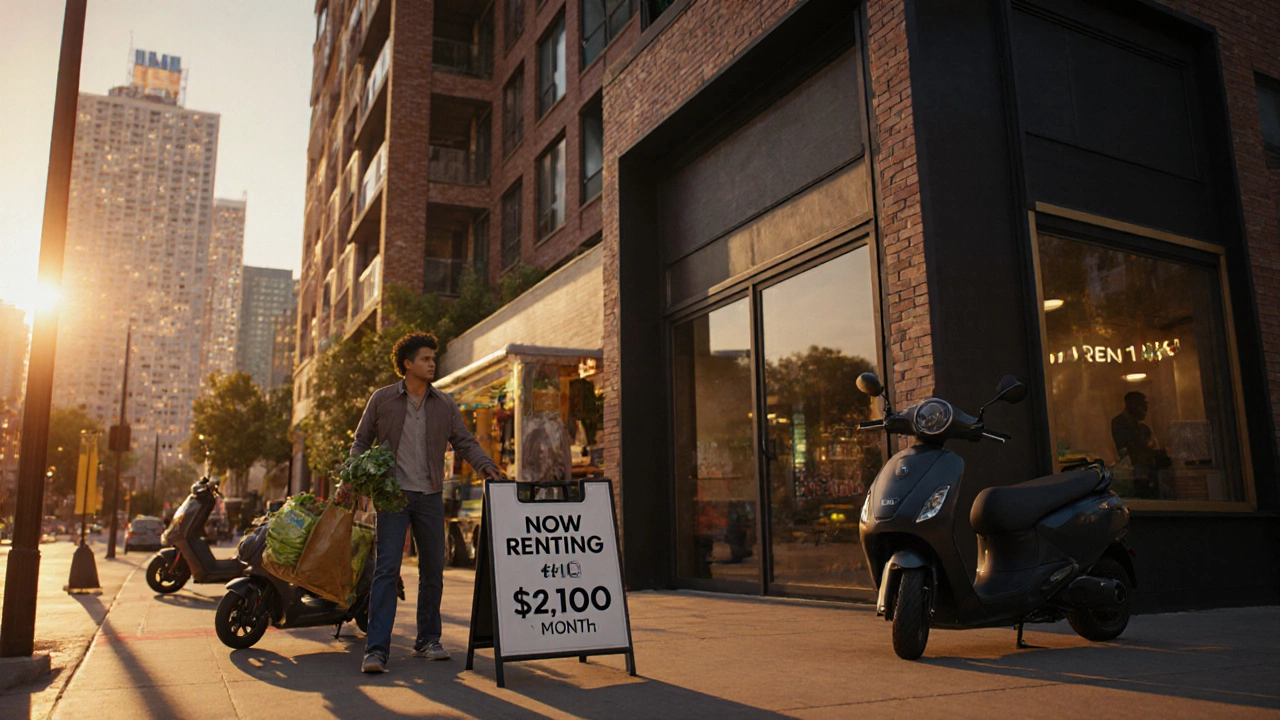Austin Cost of Living Calculator
Calculate if your salary can afford living in Austin with the city's high rental prices and costs. Based on 2025 data from the article.
Based on the 50/30/20 budget rule: 50% for needs (rent, utilities, food), 30% for wants, 20% for savings.
The article states that at $60,000 you're 'stretched thin' and $75,000+ is needed for comfortable living.
Is Austin, TX cheap to live? If you’re thinking about moving there for a job, a change of pace, or just because it’s trendy, you need to know one thing: Austin isn’t cheap anymore. It used to be one of the most affordable big cities in Texas. Now, it’s one of the fastest-growing-and most expensive-places in the U.S. for renters.
Austin Rent Prices in 2025
A one-bedroom apartment in downtown Austin averages $2,100 a month. That’s up from $1,500 just five years ago. Outside the center, in neighborhoods like North Central or East Austin, you’re still looking at $1,700 to $1,900 for a decent place. Two-bedrooms? Start at $2,400 and go up fast.
Compare that to cities like Dallas or Houston, where you can find similar apartments for $1,400-$1,600. Even Phoenix, which also saw big growth, has lower rents. Austin’s rental market is tight. There’s not enough housing to keep up with the people moving in-about 150 new residents every day, according to the City of Austin’s 2024 data.
What You Get for Your Money
You’re not just paying for square footage. You’re paying for access. Walkable neighborhoods with food trucks, live music, and bike lanes cost more. A studio in South Congress might be $1,800, but you’re steps from coffee shops, bars, and the river. A similar unit in the suburbs might be $1,300, but you’ll need a car, pay for gas, and spend 30-45 minutes commuting each way.
Many new buildings in Austin come with gyms, rooftop decks, and package lockers. That’s nice, but it’s built into the rent. You don’t get a discount for skipping those extras. Older buildings without amenities? They’re harder to find. And if you do, they often need repairs or have noise issues.
Bills, Taxes, and Other Costs
Rent isn’t the only bill. Electricity in Austin is among the highest in Texas. The city’s utility provider, Austin Energy, charges about $150-$200 a month in summer for a 900-square-foot apartment. That’s because air conditioning runs nonstop. In winter, it drops to $80-$100, but you’re still paying more than in most other cities.
Property taxes in Texas are high, but renters pay them indirectly. Landlords raise rent to cover the cost. Austin’s property tax rate is around 2.2% of home value. That means if your landlord owns a $400,000 house, they’re paying nearly $8,800 a year in taxes-and that’s baked into your monthly rent.
Internet? $70-$90 a month. Groceries? About 10% higher than the national average. A gallon of milk costs $4.50. A dozen eggs? $4.25. Even fast food is pricier. A burger and fries at a local spot runs $14-$18.

Where You Can Find Better Deals
If you’re set on Austin, you have to be smart. The cheapest areas aren’t the ones you see on Instagram. Look at:
- South Austin (south of I-35): Slightly older homes, more variety, rents start around $1,600 for a one-bedroom.
- East Austin (east of I-35): Still changing, but you can find units under $1,700 if you’re okay with older buildings.
- North Austin (around 183 and Mopac): More suburban, but you’ll find two-bedrooms for $2,100-$2,300 with yards or garages.
- Westlake Hills or West Austin: These are luxury zones. Avoid unless you’re making $100K+.
Also, consider renting a room in a shared house. In 2025, it’s common for people to split a 3-bedroom house with 3-4 roommates. You can get a private room for $900-$1,200, including utilities. That’s half the cost of a studio-but you give up privacy.
What’s Driving the High Costs?
Austin’s boom isn’t random. It’s tied to tech. Companies like Tesla, Apple, and Oracle opened big campuses here. That brought thousands of high-paying jobs. People moved in. Housing didn’t keep up.
Local government slowed down new construction for years, worried about traffic and water use. Then, when demand exploded, there wasn’t enough land or infrastructure to build fast enough. The result? A housing shortage that’s lasted nearly a decade.
Investors from out of state bought up thousands of homes, turned them into rentals, and raised prices. A 2024 report from the Austin Board of Realtors showed that 37% of homes sold in 2023 were bought by out-of-state investors-up from 18% in 2019.

Is Austin Worth It?
It depends on your job. If you’re making $80K-$100K+ and work remotely or at a tech company, you can manage. You’ll still feel the pinch, but you’ll have room to breathe.
If you’re making $50K-$65K, like a teacher, nurse, or retail worker, Austin is brutal. After rent, utilities, and food, you’re left with $500-$800 a month. That’s not enough for emergencies, savings, or even a weekend trip.
And don’t forget the hidden costs: traffic. Austin’s commute times have jumped 35% since 2020. The average driver spends 42 minutes getting to work. That’s 180 hours a year stuck in traffic. That’s time you can’t get back.
Alternatives to Consider
If Austin feels too expensive, look at nearby cities:
- Round Rock (15 minutes north): Rents are 25% lower. Good schools. New developments. Easy commute to downtown.
- Bastrop (30 minutes southeast): Small-town feel. One-bedroom apartments for $1,300. You’ll need a car, but the pace is slower.
- San Marcos (30 minutes south): Home to Texas State University. Lots of student housing turned rentals. Rents start at $1,100.
- Georgetown (25 minutes north): Growing fast. Still affordable. New apartments, but prices are rising.
These places give you Austin’s vibe without Austin’s price tag. You can drive in for concerts, food, or work. Many people do.
Final Reality Check
Austin used to be a place where you could live without a second job. That’s over. The city is now a luxury market with a middle-class problem. If you’re not making six figures, you’ll need to make trade-offs: smaller space, longer commute, roommates, or a longer drive to work.
Don’t move to Austin because it’s cool. Move there because you have a job that pays enough to cover the bills-and even then, budget tightly. Rent prices aren’t going down. They’re still rising, slowly but steadily. The city’s growth hasn’t slowed. And housing supply? Still behind.
If you’re looking for affordable living in Texas, consider Dallas, Fort Worth, or even smaller towns like Waco or Tyler. They’re not as flashy. But they won’t drain your bank account every month.
Is Austin cheaper than Houston or Dallas?
No. Austin is significantly more expensive. A one-bedroom apartment in Houston averages $1,400, and in Dallas, it’s $1,500. In Austin, it’s $2,100. Even with higher salaries in Austin, the cost difference is too large for most people to ignore.
What salary do you need to live comfortably in Austin?
To live comfortably-meaning you can pay rent, bills, groceries, save a little, and have room for fun-you need at least $75,000 a year. That’s based on the 50/30/20 rule: 50% for needs (rent, utilities, food), 30% for wants, 20% for savings. At $50,000, you’re barely surviving. At $60,000, you’re stretched thin.
Are there any rent control laws in Austin?
No. Texas state law bans rent control in all cities, including Austin. Landlords can raise rent by any amount when a lease ends. Many raise it 10-20% yearly. There’s no legal protection for tenants against sudden spikes.
Is it better to rent or buy in Austin right now?
For most people, renting is still the better option. Median home prices are over $500,000. With high interest rates (around 6.5% in 2025), monthly mortgage payments are close to rent prices-but you’re also paying property taxes, insurance, and maintenance. Renting gives you flexibility and lower upfront costs.
How long do leases usually last in Austin?
Most leases are 12 months. Some landlords offer 6-month leases, but they charge 10-15% more per month. Short-term leases are rare and expensive. If you’re unsure about staying long, look for furnished apartments or sublets through platforms like Zillow or Facebook Marketplace.
If you’re thinking about moving to Austin, do the math before you pack. Rent isn’t just a number-it’s a lifestyle decision. And right now, Austin’s lifestyle comes with a heavy price tag.
